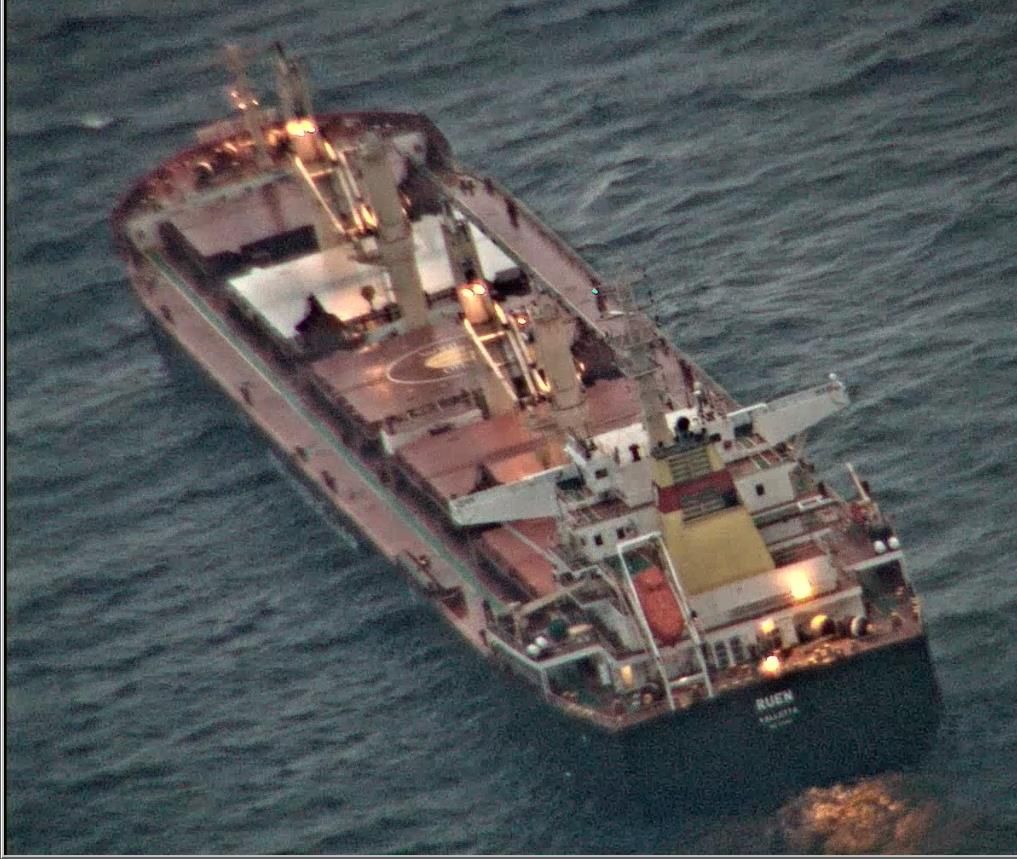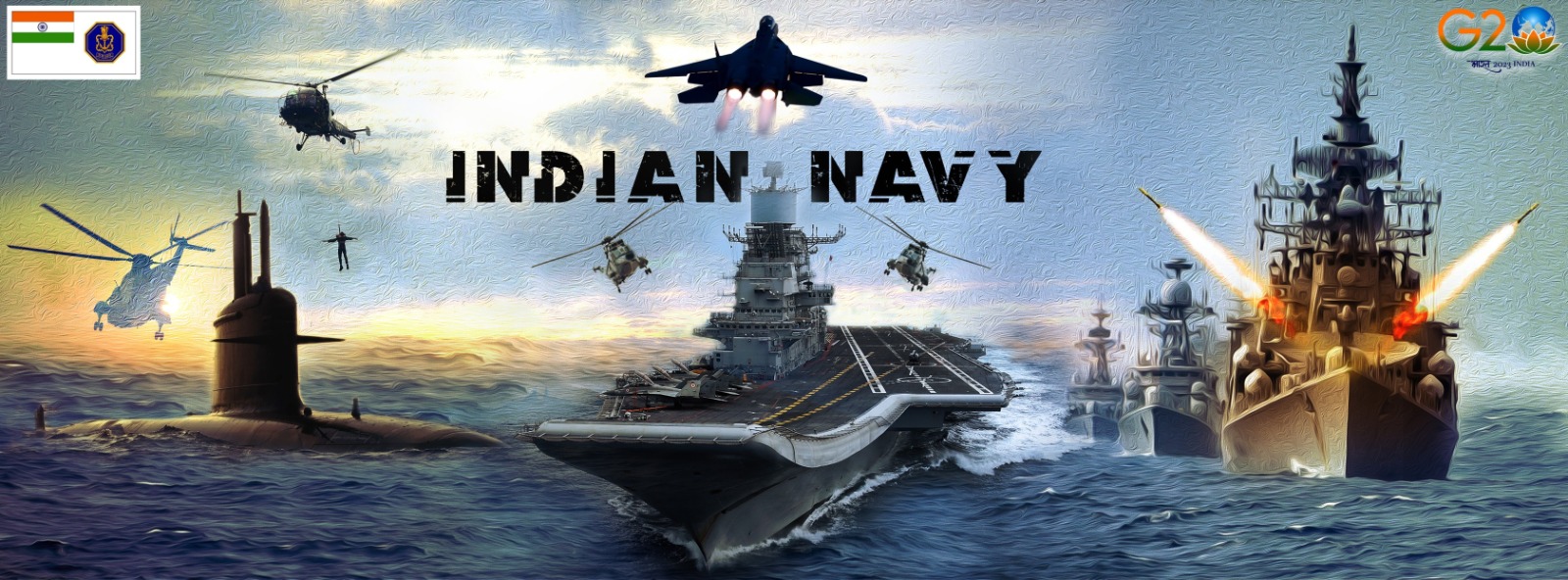A Liberia-flagged cargo vessel faced a suspected hijacking as it transited the northern Arabian Sea on January 4. India rushed its warship, a Predator Drone, and a P-8I patrol aircraft to intercept and deploy its marine commandoes to board the distressed bulk carrier to conduct searches and ensure the crew members’ safety on January 5.
This incident comes a month after the Somali pirates hijacked a Malta-flagged cargo vessel in this region of the Indian Ocean in December. Shipping insurance costs for cargo vessels transiting the Red Sea and the Gulf of Aden are all set to rise a few notches following the hijack scare involving the Liberia-flagged bulk carrier MV Lila Norfolk.
The cost of insuring vessels transiting the Red Sea has already seen a jump in December after mounting attacks in the region from Houthi rebels, forcing some cargo ships to avoid the vital waterway connecting the Atlantic and the Indian Oceans, according to Indian officials.
The latest hijacking of a cargo vessel came to light when the United Kingdom Maritime Trade Operations (UKMTO) reported the incident on its website.
The Indian Navy, reacting to the message on the UKMTO website, rushed its destroyer warship to check on the Liberia-flagged vessel and deployed a maritime patrol aircraft to monitor the in-trouble ship, according to officials.
“The vessel had sent a message on the UKMTO portal indicating boarding by approximately five to six unknown armed personnel in the evening on January 4,” an Indian Navy official at its headquarters in New Delhi said.
“Indian Navy’s mission-deployed platforms responded swiftly to a maritime incident in the Arabian Sea involving a hijacking attempt onboard a Liberia-flagged bulk carrier,” the official said.
The Indian Navy launched the maritime patrol aircraft, a Boeing P-8I anti-submarine warfare aircraft, and diverted INS Chennai to assist the distressed vessel.
This guided missile destroyer was already deployed for Maritime Security Operations in the Arabian Sea as part of the enhanced maritime security following a similar hijacking of another cargo vessel in the Arabian Sea in December.
The suspected hijacking took place around 460 nautical miles from Eyl on the Somali coast, as the vessel was said to be heading towards a port in the Arabian peninsula. Informed guess was that the cargo ship was sailing towards Bahrain or a port in Saudi Arabia, the officials said.
“The maritime patrol aircraft overflew the vessel early in the morning on January 5 and established contact with the ship, ascertaining the crew’s safety,” the officials said. “The naval aircraft continued to monitor movement, and INS Chennai closed in on the vessel to render assistance.”
The Indian Navy continued to closely monitor the overall situation concerning the cargo ship, the crew of which was said to be in the safe room of the vessel.
The Indian Navy officials said its warship coordinated with other regional maritime security agencies, and the naval forces deployed there already to provide escort assistance to shipping vessels transiting the area.
By the evening of January 5, the Indian warship INS Chennai intercepted the vessel and maintained continuous surveillance with assistance from the maritime patrol aircraft.
The Indian Navy also deployed its General Atomics-supplied Predator MQ9B surveillance drone, apart from an integral helicopter from INS Chennai, to monitor the distressed cargo vessel.
The Indian Navy Marine commandos on INS Chennai boarded the troubled merchant vessel and sanitized the cargo ship. Indian Navy spokesperson Commander Vivek Madhwal said, “All 21 crew members, including 15 Indians, on board were safely evacuated from the citadel after sanitization by the Marine Commandos confirmed the absence of the hijackers.”
He said the attempt of hijacking by the pirates was probably abandoned with the forceful warning by the Indian Navy’s maritime patrol aircraft regarding interception by the Indian Naval warship.
INS Chennai was still near the merchant vessel and rendering support to restore the power generation and propulsion on the vessel and commence the voyage to the next port of call.
The UKMTO website reported that the military personnel searched MV Lila Norfolk and found no unauthorized persons. It also confirmed that all the crew members were safe. The vessel was now proceeding out of the area. The UKMTO asked all cargo vessels transiting the Arabian Sea to do so cautiously and report all suspicious activities in the region.

Shipping Insurance Shoots Up Over Houthi Attacks In Red Sea
According to a Bloomberg report published on Alarabian News, the cost of insuring vessels transiting the Red Sea had jumped in the third week of December after mounting attacks in the region forced some ships to avoid the vital waterway.
The insurance cover had then surged to about 0.5 percent of the value of a ship’s hull, a sharp increase from early December when the costs were pegged at around 0.1 percent to 0.2 percent of the hull value.
The report said, “So-called war risk rates are generally quoted as a percentage of the value of the ship for the period that a vessel is trading in risky areas.”
That figure climbed over ten-fold from before the attacks escalated in earnest. London’s insurers had expanded the regions within the Red Sea designated as risky, effectively boosting the area where war cover was needed.
“For a vessel costing US$100 million, an expense of 0.5 percent translates to an insurance cost of US$500,000 per voyage. This applies to all merchant ships entering routes in the Southern Red Sea or Gulf of Aden,” the report said.
Since December, vessels across all sectors of global shipping have begun avoiding the Red Sea after a string of attacks by Yemen-based Houthi militants, with many choosing to sail thousands of miles around Africa.
Meanwhile, the US has assembled a coalition of nations to defend shipping in the region, although details on how it will work are currently sketchy.
“Both options of increased premiums and rerouting around Africa will see a knock-on effect on the price of goods,” the report quoted Toby Vallance, Executive Committee Member of the London Forum of Insurance Lawyers.

The disruption in marine traffic caused by the Houthi attacks, spurred by the ongoing Israel-Hamas war, now means that both of the world’s main arteries of global trade — Panama and the Suez Canal — are now facing snarls, threatening the smooth passage of goods across the globe.
Since December, leading shipowner associations have been studying the suspected piracy incident off the coast of Somalia after making a significant safety call early last year when they declared an end to the High-Risk Area designation for the Indian Ocean region close to the Gulf of Aden after a steep fall of the piracy incidents in recent years.
On December 14, Navibulgar’s 41,600-dwt bulk carrier Malta-lagged MV Ruen (built in 2014) was hijacked 1,126 km off the Somalia coast in the Arabian Sea.
The Indian Navy had rushed its warship and a maritime patrol aircraft to aid the crew of MV Ruen. The Indian Navy evacuated an injured crew member from the hijacked vessel on December 18.
The injured crew member had sustained injuries during the piracy incident but was reported to be stable. To ensure his safety, the Indian Navy successfully secured his release from the hijackers. He was later transferred to Oman for further treatment after the Indian Navy provided him with immediate medical attention.
- NC Bipindra is a 30-year veteran in journalism specializing in strategic affairs, geopolitics, aerospace, defense, and diplomacy. He has written extensively for the Times of India, New Indian Express, Press Trust of India, and Bloomberg News. He can be reached at ncbipindra (at) gmail.com
- Follow EurAsian Times on Google News




